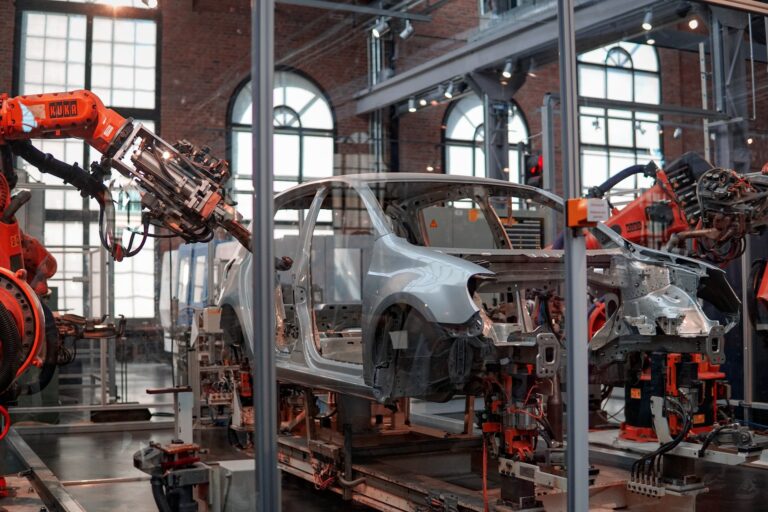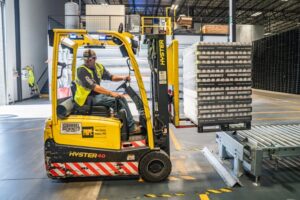Robotics technology has become a staple of almost every industry. Using robots in manufacturing, industrial and construction sectors has many benefits for large businesses. However, a robotic workforce can also help small and medium-sized businesses make their processes more cost-effective.
What Are Typical Operating Costs in a Business?
Operating costs are the basic expenses incurred by a company to keep functioning. They differ depending on the nature of the business, but they typically include employee salary and benefits, property taxes, equipment and vehicle maintenance, and marketing costs.
In recent years, due to global events such as the COVID-19 pandemic and the conflict in Ukraine, operating costs have significantly increased for many small and medium-sized businesses. Therefore, SMES needs to find ways to reduce them. One way to accomplish this is by utilizing robotics technology.
“Regular, repetitive tasks are perfect for robots to perform.”
-
Reducing the Need for Manpower
One of the most significant advantages of a robot workforce is the ability to reduce the amount of staffing needed to perform tasks. Investing in robotic workers can significantly reduce costs for SMEs in the long run by eliminating the need to hire new employees.
Regular, repetitive tasks are perfect for robots to perform. Compared to human workers, robots don’t get tired or lose focus. They can continue to work at maximum efficiency for as long as they are powered by electricity.
For SMEs, this means less money going to pay salaries and benefits. Robots have a high upfront cost, as well as repair and maintenance fees. However, these expenses are generally much cheaper than paying the $15 minimum wage for human workers.
Funds that could have been used to pay new employees can be reallocated to maintenance and other operating costs — potentially increasing productivity. In addition, SMEs can now take advantage of robot rental services. These are generally much cheaper than buying a robotic workforce wholesale.
The advantages of robots in the workplace are even more critical to a small or medium-sized company suffering from losing employees. The “great resignation” caused staff shortages for many companies — and SMEs are feeling the effects more strongly.
Investing in robotics solutions can help SMEs compensate for a workforce shortage — allowing them to maintain or even increase their efficiency despite fewer employees. This can save small or medium businesses by ensuring they meet their goals.
“Robotic helpers are straightforward tools programmed to do tasks with precision and speed.”
-
Creating a Better Workplace
While robotics is a suitable replacement for lost employees, they are also an excellent way to help retain them. Studies show that losing a worker can cost an SME a lot of money. It costs one-half to twice a worker’s yearly salary to replace them.
Therefore, it’s in a business’s best interest to try to retain as many employees as possible. One of the biggest reasons people leave their jobs is because of exponential increases in workload. Too much can take a toll on a workforce — especially if they are short-staffed.
Technology can be a source of relief or an additional burden, depending on the tools a business invests in for its employees. In a recent study, 49% of global employees stated they were frustrated with the digital tools their employer provides. The ideal digital programs should streamline processes, not make them more complicated. Robotic helpers are straightforward tools programmed to do tasks with precision and speed.
Assigning robots to do repetitive, low-effort tasks can reduce the workload for employees. This can allow them to allocate their time to more productive jobs — reducing stress and improving productivity.
“Companies can use robots to perform more hazardous tasks in the workplace.”
-
Ensuring Workplace Safety
Robotics in the workplace can do more than reduce employee stress. Another of the most significant sources of lost money is the cost of injuries. Studies show that businesses lose $1,080 for every worker injured on the job. The cost of insurance and workers’ compensation will make that figure much higher.
Companies can use robots to perform more hazardous tasks in the workplace. One of the most common sources of injuries is lifting and transporting heavy materials. Instead of human workers performing this task, robots can bear the burden while an employee supervises.
Having robots work on these tasks can significantly reduce or even eliminate potential causes of workplace injuries. Maintaining and repairing a broken robot is much more affordable than caring for injured people. Robots doing the heavy lifting also boosts employee morale because they know they’ll be safe from harm.
The Robot Workforce Can Help SMEs Reduce Costs
Inflation is making everything more expensive, and SME operating costs are increasing exponentially. Robotics technology can help businesses reduce those expenses by covering workloads during staff shortages, relieving current employees while eliminating the need to hire new ones.
Robots can also help increase company productivity and make the workplace safer for people, reducing the number of workplace injuries and the costs that come with them.









